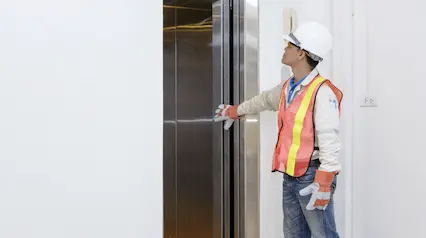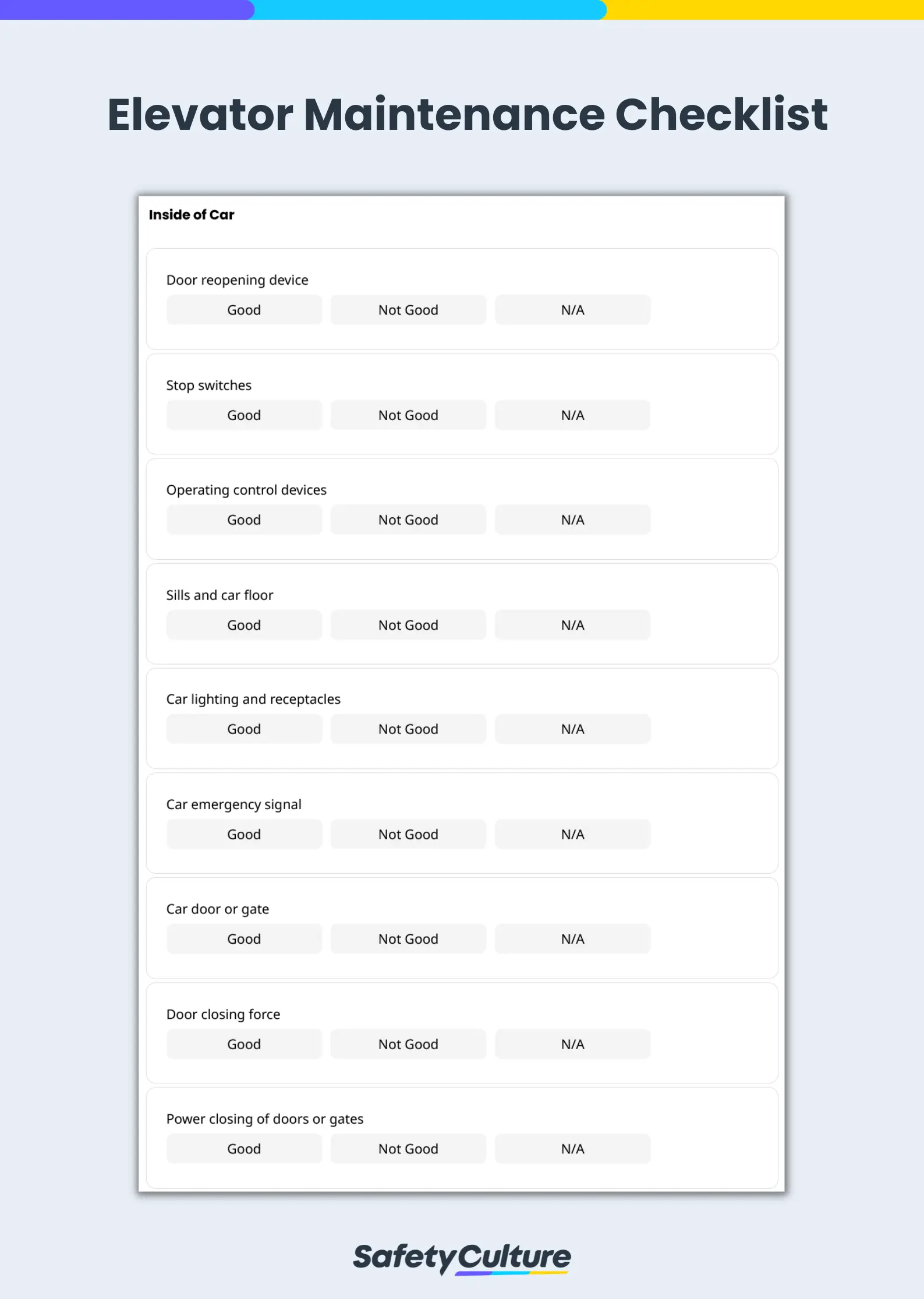What is Elevator Maintenance Checklist?
An elevator maintenance checklist is an essential tool for service technicians to ensure the safety and proper functioning of elevators. This checklist guides technicians through a thorough inspection process, covering all critical areas, including the interior of the elevator car, the top of the car, and the machine room. It helps assess potential risks that could cause equipment defects and malfunctions.
What is Elevator Maintenance?
Elevator maintenance is a systematic inspection carried out by service technicians to keep elevators in good working condition. The process involves finding, diagnosing, and fixing problems before they cause system breakdown, malfunction, or shutdown. Elevator maintenance is usually performed at least once a month to prevent costly repairs and sustain asset’s lifespan.
Why is Elevator Maintenance Important?
Elevators, or lifts, are crucial investments for multi-story buildings as they play a significant role in transporting people and freight as quickly as possible between floors. According to the National Elevator Industry, Inc. (NEII) report, there are 18 billion trips on elevators in the US every year. With all those passengers utilizing this equipment, regular elevator or lift maintenance is imperative.
Elevator preventive maintenance inspections are critical in ensuring compliance with building regulations and ensuring all equipment is in good working condition. Elevator malfunctions can inconvenience tenants, cause costly repairs and create safety hazards.
Regular maintenance checks provided by elevator inspection companies help ensure public safety and guarantee smooth and efficient building operations. Further, elevators that are well maintained also significantly increase the marketability of properties and lessen the risk of liability issues and tenant dissatisfaction.
What to Include on Your Elevator Maintenance Checklist
The Occupational Health and Safety Administration (OSHA) and the American Society of Mechanical Engineers (ASME) work in conjunction to establish maintenance requirements for elevators. Below are the following requirements to include on your elevator maintenance checklist:
- Inspect and repair operating components.
- Clean, lubricate, and adjust all the elevator components.
- Execute electrical equipment tests of electrical wiring.
- Check the elevator speed and ensure telephone is operational.
- Maintain safety equipment such as door operation.
Elevators should be inspected on a periodic basis and preventive maintenance can be done monthly, depending on the usage of the elevator.
How Do You Inspect an Elevator Using a Checklist?
Here are the top 5 tips for elevator maintenance inspection:
1. Communicate with Tenants
Let tenants know that scheduled maintenance is occurring, use signs and notices. Avoid high foot traffic periods and always ensure alternative elevators or stairs are available. Include signage on all key floors that the elevator stops at.
2. Automate Regular Inspections
Improve productivity by transforming paper-driven elevator inspections into an automated digital process. Equip elevator inspectors with smart checklists to help them efficiently perform maintenance activities and easily attach media for precise details. Automate workflows to notify elevator inspectors of their assigned work order.
3. Perform the Inspection
Performing an elevator equipment audit helps determine the condition of equipment, the types of necessary repairs, and other services needed. Inspect below major parts to ensure elevator safety:
- Inside the car – Check the condition of signs and operating device symbols, button functions, ventilation, lighting, car door force when opening and closing. Ensure emergency devices are available and in good working condition.
- Top of the car – Examine if the travel cables and hoistways’ are operational and properly adjusted. Apply the appropriate lubrication for rails, governor ropes, suspension means, chains, etc.
- Inspect machine room – It’s crucial to assess the conditions of equipment in the machine room. Supply the required lubrication to the suspension means, gears, bearings, and other mechanical equipment that needs lubricating.
Utilize ready-to-use elevator maintenance checklist that is customizable according to your inspection needs.
4. Conduct Inspections on the Go
Perform elevator maintenance on your handheld device anytime, anywhere, even if you’re offline. Capture photo evidence of equipment defects, take detailed repair notes to clarify the elevator system damage, and assign corrective actions according to the priority level to immediately mitigate the risks.
5. Prepare Accurate Reports
Complete a comprehensive report of the inspection including photos of any equipment defects and a description of any operational issues. Well-documented reports are required for regulatory compliance, fire safety requirements, and maintenance logs.
FAQs About Elevator Maintenance
Elevators in general need quarterly maintenance but for other types like commercial lifts, conducting maintenance at least twice a year is ideal. Scheduled elevator maintenance can help proactively catch issues before they lead to elevator breakdowns that can be costly to repair.
Elevator maintenance can cost from $3,500 to $10,000 depending on the number of elevators to be maintained. The types of elevators and can also affect the maintenance cost as well as the type of building where the elevators are located.
Regardless of how often elevators are used, they need to be replaced when they reach their 20th to 25th year. The reason for the need to replace elevators when they reach this number of years in service is that they have parts that inevitably breakdown.



